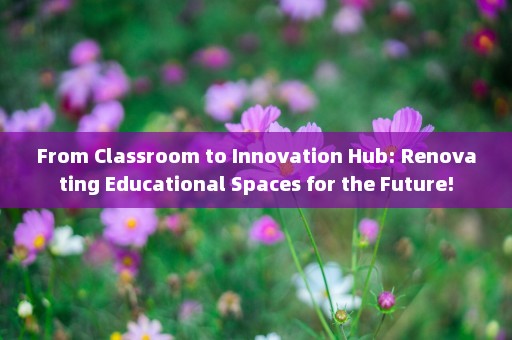As a product of the traditional educational system, I've spent countless hours within the confines of four walls, listening to lectures and taking notes. However, I've always felt a sense of limitation in those spaces. The world is rapidly evolving, and our educational environments need to keep up with the changing times. In this blog post, I'll share my journey from a traditional classroom to an innovation hub, offering practical insights and steps for renovating educational spaces for the future.

Acknowledging the Need for Change
It all started when I realized that the traditional classroom setup was no longer sufficient to foster creativity, collaboration, and critical thinking. Here are some experiences that highlighted the need for change:
- Feelings of confinement and lack of inspiration in the four walls of a traditional classroom.
- The struggle to engage students in active learning due to the limitations of the physical space.
- Observing how modern workplaces embraced open, flexible, and technology-driven environments to enhance productivity and innovation.
Research and Inspiration
Understanding the need for change, I embarked on a journey to explore innovative educational spaces around the world. Here are some key points to consider when researching and finding inspiration for renovating educational spaces:
- Visit innovative schools, universities, and educational institutions to observe their layouts, furniture, and technology integration.
- Research case studies and articles on successful educational space renovations to understand the impact on student learning and engagement.
- Seek inspiration from modern workplaces, as they often adopt design principles that promote collaboration, flexibility, and creativity.
Key Elements of an Innovation Hub
Based on my research and personal insights, here are some essential elements that contribute to creating an innovation hub within educational spaces:
3.1 Flexible Seating and Layouts
- Replace traditional row seating with flexible furniture options like bean bags, standing desks, and collaborative tables.
- Arrange furniture in a way that promotes interaction, collaboration, and easy movement.
- Provide multiple seating arrangements to cater to different learning styles and group activities.
3.2 Technology Integration
- Invest in interactive whiteboards, tablets, and other digital devices to facilitate technology-driven learning.
- Ensure reliable internet connectivity throughout the space to support online research and collaboration.
- Implement learning management systems and other educational software to enhance student engagement and personalized learning.
3.3 Collaborative Spaces
- Designate areas for group work, project-based learning, and brainstorming sessions.
- Include writable surfaces like whiteboards or glass walls to encourage idea-sharing and collaboration.
- Provide comfortable seating and ample space for students to work together on projects.
Precautions and Considerations
While renovating educational spaces, it's crucial to consider the following precautions:
- Ensure compliance with safety regulations and accessibility standards.
- Involve educators, students, and administrators in the design process to address their specific needs and preferences.
- Anticipate future trends and technological advancements to create a sustainable and adaptable space.
Measuring Success
Once the renovation is complete, it's essential to evaluate the success of the transformed space. Here are some metrics to consider:
- Student engagement and participation levels.
- Feedback from educators and students regarding the effectiveness of the new space.
- Assessment of academic performance and achievement in the renovated environment.
Conclusion
Renovating educational spaces from traditional classrooms to innovation hubs is a transformative journey that requires careful planning, research, and collaboration. By incorporating flexible seating, technology integration, and collaborative spaces, we can create environments that foster creativity, critical thinking, and prepares students for the future. Let's embrace this change and empower the next generation to innovate, collaborate, and learn in ways we never thought possible.
Post a comment

Comment List